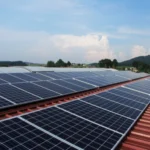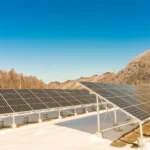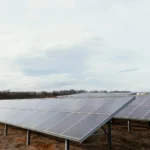Best Solar Panels for Rooftop Projects: How to Choose the Right One
Best Solar Panels for Rooftop Projects: How to Choose the Right One
Crystalline silicon photo voltaic (PV) technology has given consistent performances in Indian conditions over the years. Limited experience with thin film technology has provided good performance in Rajasthan but slightly lower in other Indian Northern States compared to crystalline technology.
Selection of best solar panel
The reported annual degradation in performance of crystalline silicon panels is in the range of 0.8-1.0 % being slightly higher for thin film panels and at high temperature and humidity locations. It could also be slightly higher in the beginning, then steadies out. Best solar panel can provide over 90% performance after 10 years and 80% performance after 20 years over its life of 25 years. A few modules may need replacement at high voltage terminal end but limited to about 2 kW in a 100 kW array at the end of 10 years.
However, caution may need to be exercised as few domestic panel manufacturers have been facing the problem of PID (potential induced degradation) which can lead to much lower performance than expected.
The performance of best solar panel also depends on the system voltage apart from the temperature and the humidity. Higher the voltage, lower are the losses. Up to 5 kW systems, one should go for a voltage of 48 volts; up to 10 kW for 96 volts; and, for other rooftop systems 240 volts or higher.
Ask for the performance test certification of the modules from the manufacturers. NISE (National Institute of Solar Energy) under MNRE, Government of India, and other private sector agencies like UL (Underwriters Labs) and TUV are the key agencies providing certification. If you are going for a larger installation, ask for the random testing of say 5% of the modules. For example, a 100 kW system would require around 400 modules of 250 watts. So, the manufacturers should provide the test results at the factory premises for, say, 20 randomly selected modules.
Most of the PV modules available in the market today provide an efficiency of 14 – 15% though the peak performing panels are reported to have efficiency of over 18%. However, efficiency is not very critical as the module will provide its rated power output but the size of the module will be larger and occupy more roof space if the efficiency is lower.
A 250 watt module of 14% efficiency will occupy a roof space of around 1.8 square meters. The total roof space required for, say, a 10 kW installation comprising 40 modules of 250 watts, allowing for spacing between the arrays, will vary from 80-100 square meters, depending on the roof.
Check out the number of units generated by the solar power plants that may have been set up near your location. It would provide a broad indication of the solar radiation available as well as the observed solar generation in your area.
Suggested Articles

Solar for Commercial Buildings in India: Costs, Benefits & ROI Explained
Solar for commercial buildings in India is becoming the smartest way to cut electricity bills and increase energy independence. This guide explains system costs, benefits, ROI, and how solar power helps offices, malls, hotels, and commercial complexes become more sustainable and profitable.

Minimum Land Requirement for Solar Power Plants in India
Understanding the land requirement for solar plant projects in India is essential for accurate planning and approvals. This article explains minimum land needed per kW and MW, key influencing factors, and differences between rooftop and ground-mounted solar plants.

Researchers Develop Technique to Improve Durability of Perovskite Solar Cells
Researchers have introduced a new technique to enhance the durability of perovskite solar cells, paving the way for more reliable and long-lasting renewable energy solutions.

Delhi charges one of the highest tariffs for commercial load and industrial – average over Rs 10.00 per kWh
Delhi imposes some of the highest electricity tariffs for commercial and industrial consumers, averaging over ₹10 per kWh, impacting businesses and operating costs
Breakthrough in Solar Technology: 33.2% Efficient Perovskite-Silicon Cell
Scientists achieve a breakthrough in solar technology with a perovskite-silicon tandem cell reaching a record 33.2% efficiency for higher energy output.

Latest 100 kW Solar Plant Price in Delhi | Subsidy, ROI & Payback
Thinking about installing a 100 kW solar system in Delhi? This 2025 guide breaks down the 100 kW Solar Plant Cost in Delhi, explaining price per watt, total investment, energy generation, and key benefits for industries and businesses.

How to Safely Install Solar Panels on Metal and Asbestos Rooftops
Discover how solar systems can be installed on metal sheds and asbestos roofs, making factories more energy-efficient and sustainable

100 kW Solar Power Plant Cost in Haryana: The Ultimate Guide to the Best Rate Per Watt
Explore the 100 kW solar power plant cost in Haryana for 2025. Learn about pricing, government subsidy options, and how much you can save with solar energy.